Best cheap camera 2021: the 16 finest budget cameras you can buy
Looking for the best cheap camera you can buy? Affordability means different things to different people, but every model featured in this list offers outstanding bang for its buck. So whether you’re shopping for a bargain compact, an affordable action camera or a DSLR that won’t break the bank, we’ve rounded up the best budget cameras across all price brackets below.
Photography can be an expensive hobby, but it doesn’t have to be. While flagships tend to carry substantial price tags, rapid developments in technology mean it’s possible to pick up a feature-packed camera for a very affordable price in 2021. Many of the models recommended in this guide offer value that simply wasn’t available a few years ago. And the pace of change in the camera market is such that several slightly older high-end options can now be found for a lot less than their launch prices.
One approach when searching for the best cheap camera is to consider entry-level models. The Nikon D3500, for example, is our favorite cheap camera right now: if you’re happy to go without 4K video, it’s a solid DSLR for beginners, with a decent APS-C sensor and fantastic battery life. It also supports a wide catalogue of affordable glass, which is a key factor if you want to keep costs down when buying an interchangeable lens camera.
Alternatively, many older mirrorless models continue to offer excellent technical capabilities. Provided you don’t need the very latest technology, the Sony Alpha A6000 remains a capable, flexible all-rounder that’s now available at a highly competitive price.
Instant cameras such as the Polaroid Go are fun, accessible and affordable, while the Apeman A100 is our top bargain action camera, promising excellent 4K footage for adventurers on a limited budget. Looking for a cheap travel camera? Powerful compacts like the Sony HX90V represent excellent value and versatility.
We’ve comprehensively tested a broad spectrum of affordable cameras to help you find the best cheap option for your needs and budget. Each has been assessed based on both its outright price and its relative value. You’ll find several entry-level options below, alongside a number of older, more advanced models which now represent excellent value. Whatever you’re looking for, there’s a bargain to be found in our buying guide.

Best cheap cameras in 2021:
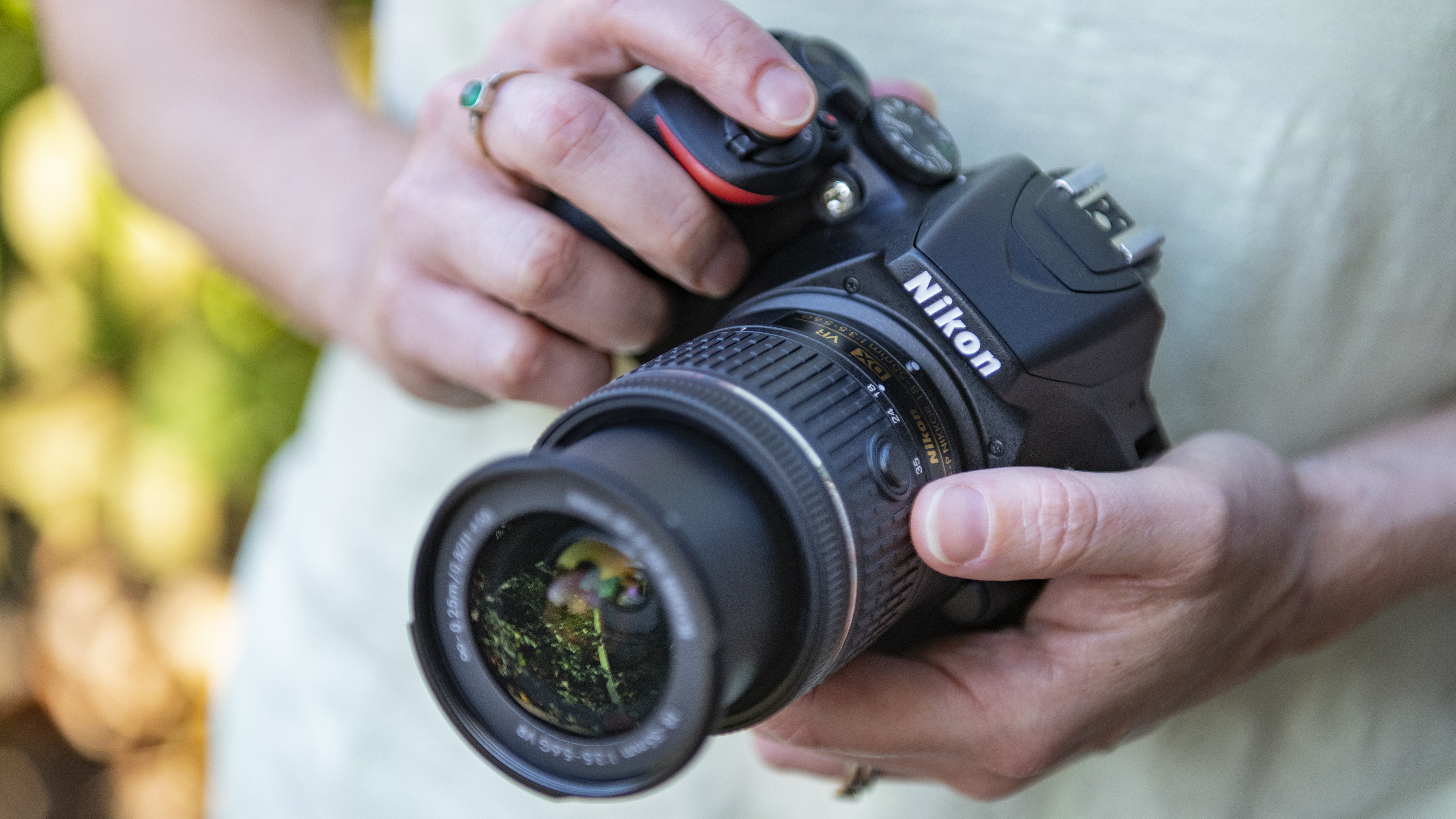
The Nikon D3400 was a hugely successful and popular DSLR, and the Nikon D3500 has taken its baton into the mirrorless age. DSLRs may be less common now, but they continue to offer excellent value compared to mirrorless cameras due to their optical viewfinders – and the Nikon D3500 remains the best budget camera for beginners.
Key changes over the older D3400 include an improved APS-C sensor (though still with 24MP) and an even better battery life of 1,550 frames per charge, next to the D3400's very capable 1,200 shots per charge. You also get a better grip and a slightly redesigned body that's a bit lighter, too. While it also worth considering mirrorless alternatives the Sony A6000, the D3500 is that bit more user-friendly – particularly if you want to use it with longer lenses.
- Read our in-depth Nikon D3500 review

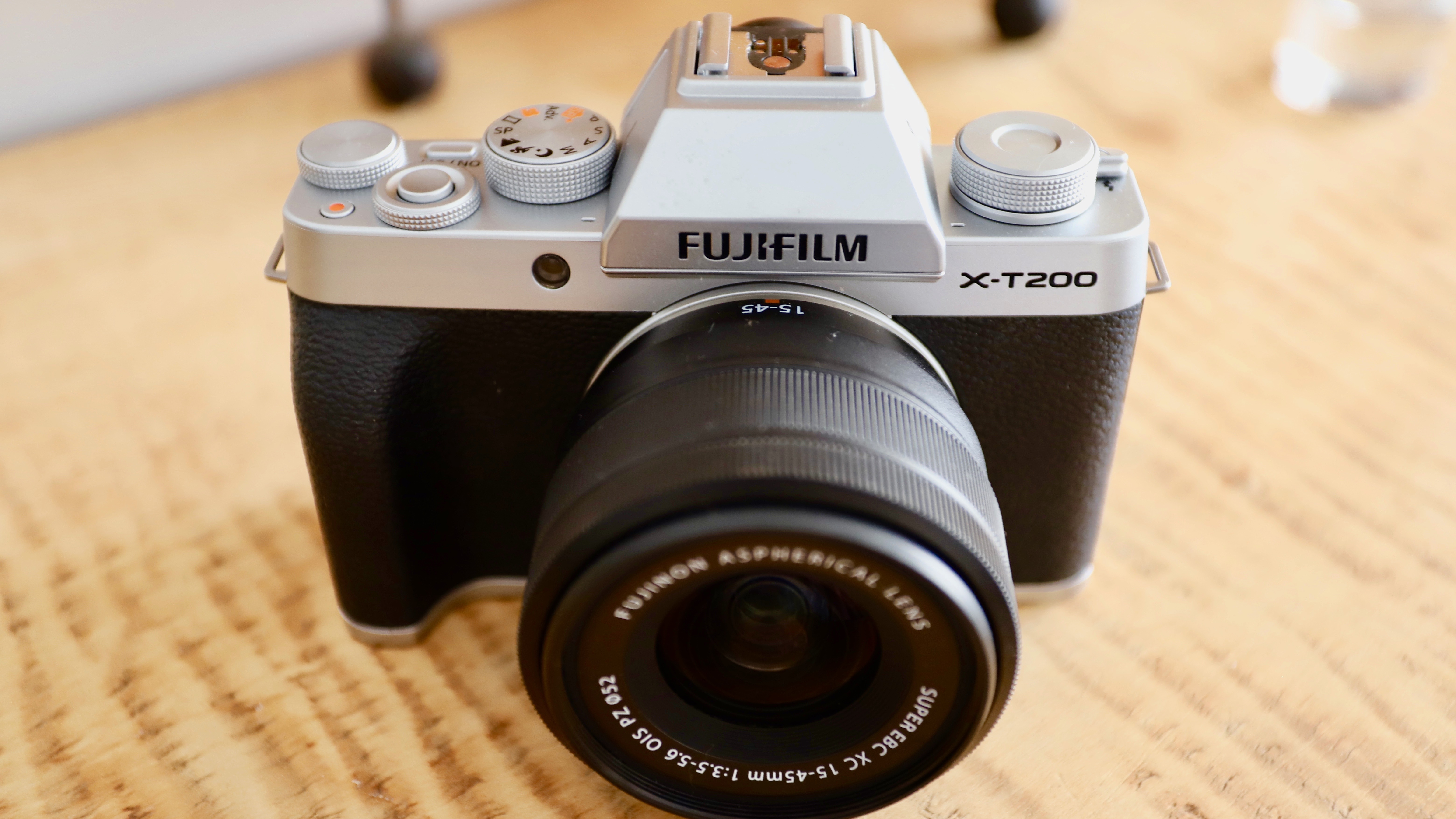
We're still fans of the Fujifilm X-T30, but this cheaper, beginner-friendly version of that camera is our favorite mirrorless option for those starting out on their photography or video-making journeys. It's a big improvement over its X-T100 predecessor in almost every way, including autofocus, and has a fantastic 3.5in rear touchscreen. Unlike the Fujifilm X-A7 (see further down), you also get a viewfinder for framing shots. The only downside is that the subject-tracking can be a little hit-and-miss during burst shooting and isn't available for video, but otherwise this is one of the best cheap cameras around for those who want a new mirrorless model.
- Read our in-depth Fujifilm X-T200 review

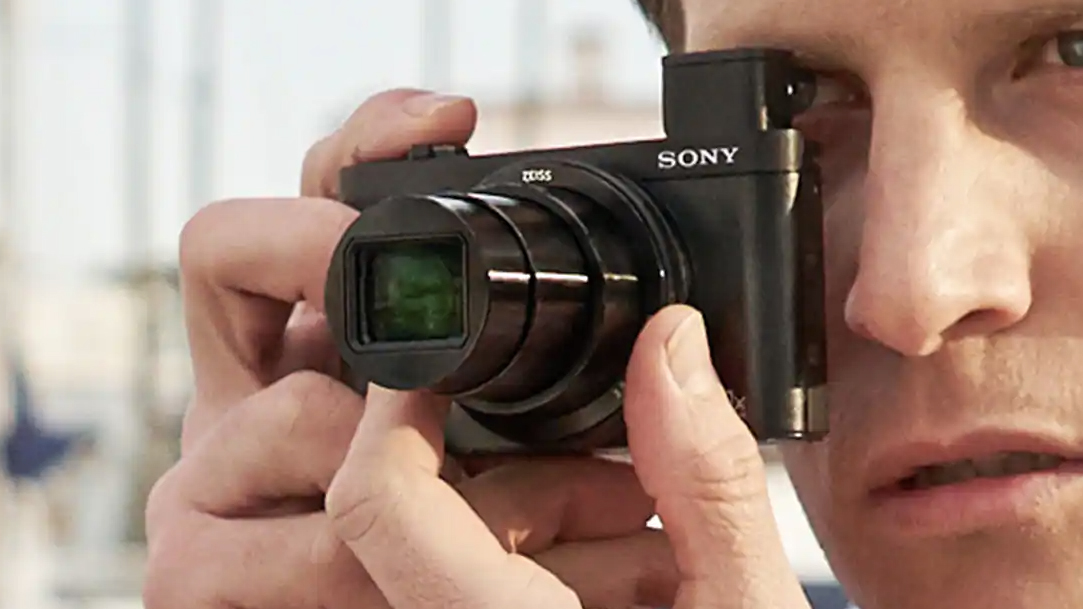
If zooming is your key concern, then a camera like the HX90V will certainly get you closer to your subject. With a 30x zoom housed in an impressively slim body, you also get useful features such as a tilting screen and a pop-up viewfinder – the latter being particularly handy when shooting in sunny climes. The compromise for offering such an extensive zoom is a smaller sensor, with a 1/2.3-inch device being less suited to low-light shooting than some models in our list. But, if it’s to be your holiday camera, that’s likely to be less of a concern. Although you are afforded manual control, those with high-end aspirations might also have their enthusiasm dampened by the lack of raw shooting, but it’s otherwise a cracking little budget camera.
- Read our in-depth Sony HX90V review

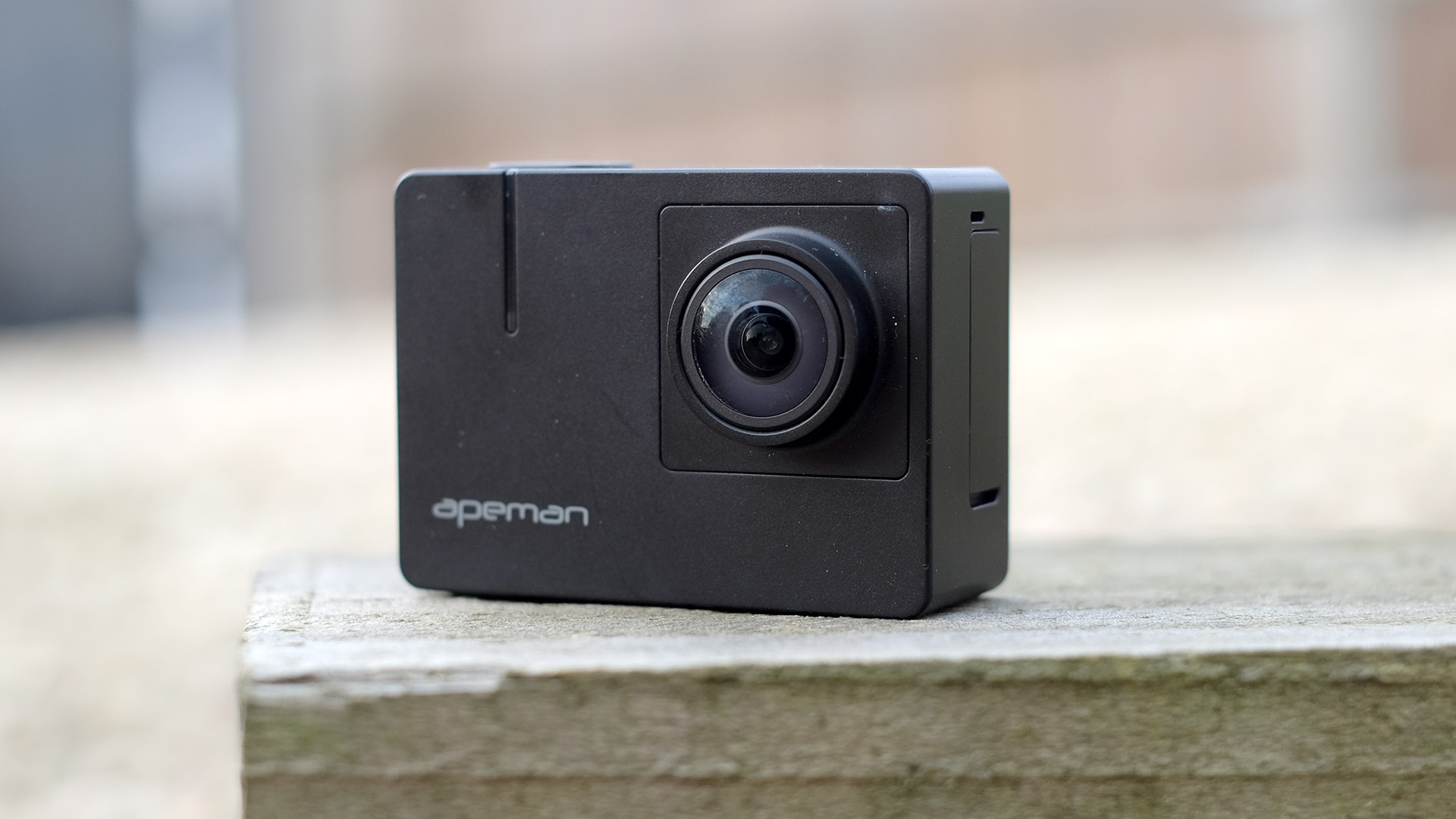
Although the Apeman A100 won’t win any prizes for body design or looks, the fact that it’s available for under $100 / £100 elevates highly in our list. Despite its low price, it produces sharp 4K footage, even managing to turn out some decent footage in low light conditions.
There are, of course, some downsides to this model over the likes of the more expensive GoPro Hero 9 Black – the image stabilization isn’t as good, while sound quality is on the poor side. But if you just want a cheap and cheerful way to record your latest adventures, the Apeman A100 is an excellent choice.
- Read our Best cheap action camera feature

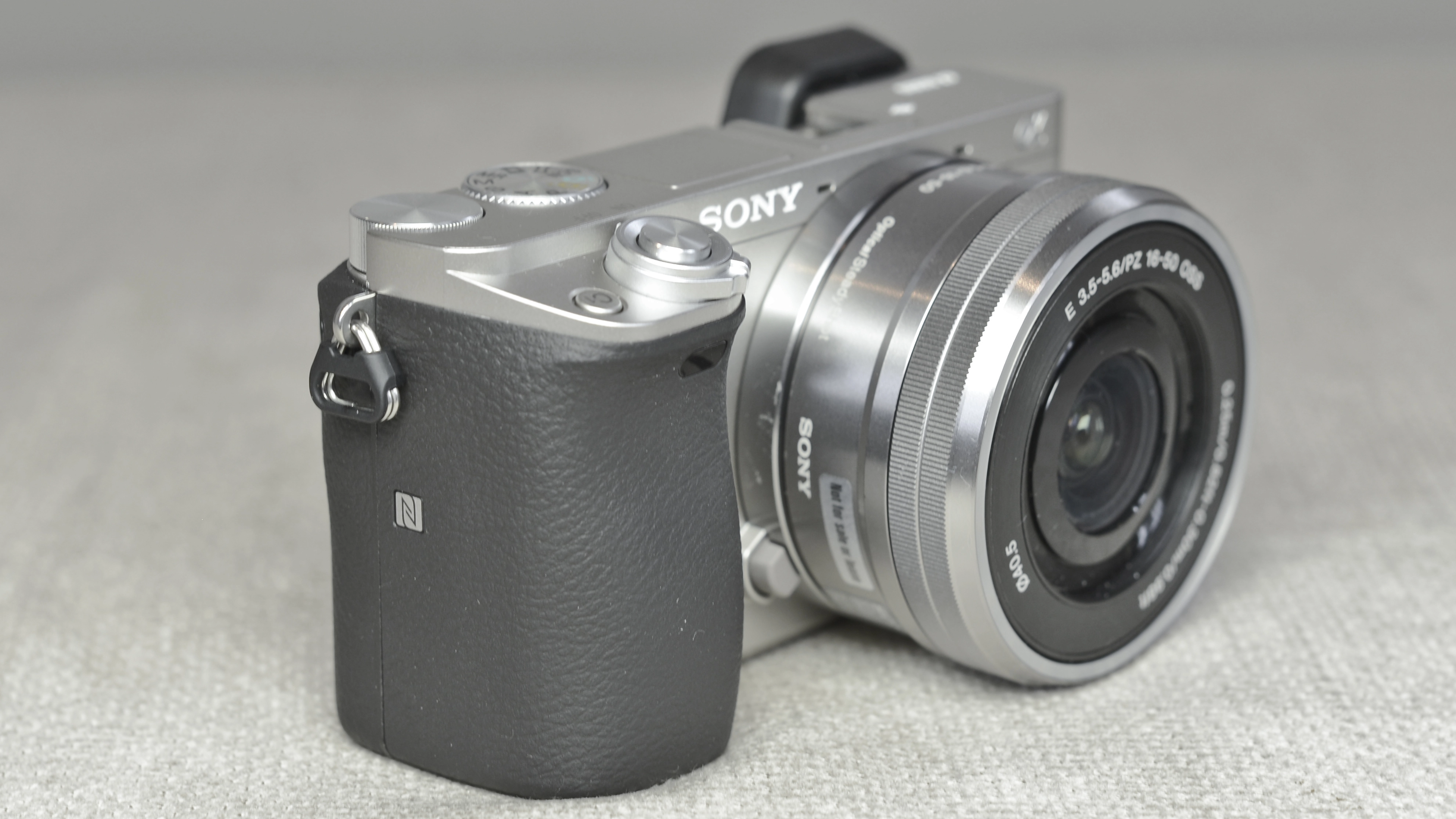
Don’t let the price fool you. The A6000 costs the same as other entry-level DSLR and mirrorless cameras, but it’s an advanced and powerful camera that has only dropped to this price through being on the market since 2014. So it may be old, but most of the specifications still looks surprisingly fresh today. This includes a 24MP APS-C sensor, a fast hybrid 179-point autofocus system and continuous shooting at 11 frames per second (fps). Its age shows in other areas, though; it only shoots 1080p Full HD video and not 4K, and the screen isn’t touch sensitive. Still, the latter is still the case on many new Sony cameras and the A6000’s high-end features ensure that it's a camera that will grow with you.
- Read our in-depth Sony Alpha A6000 review

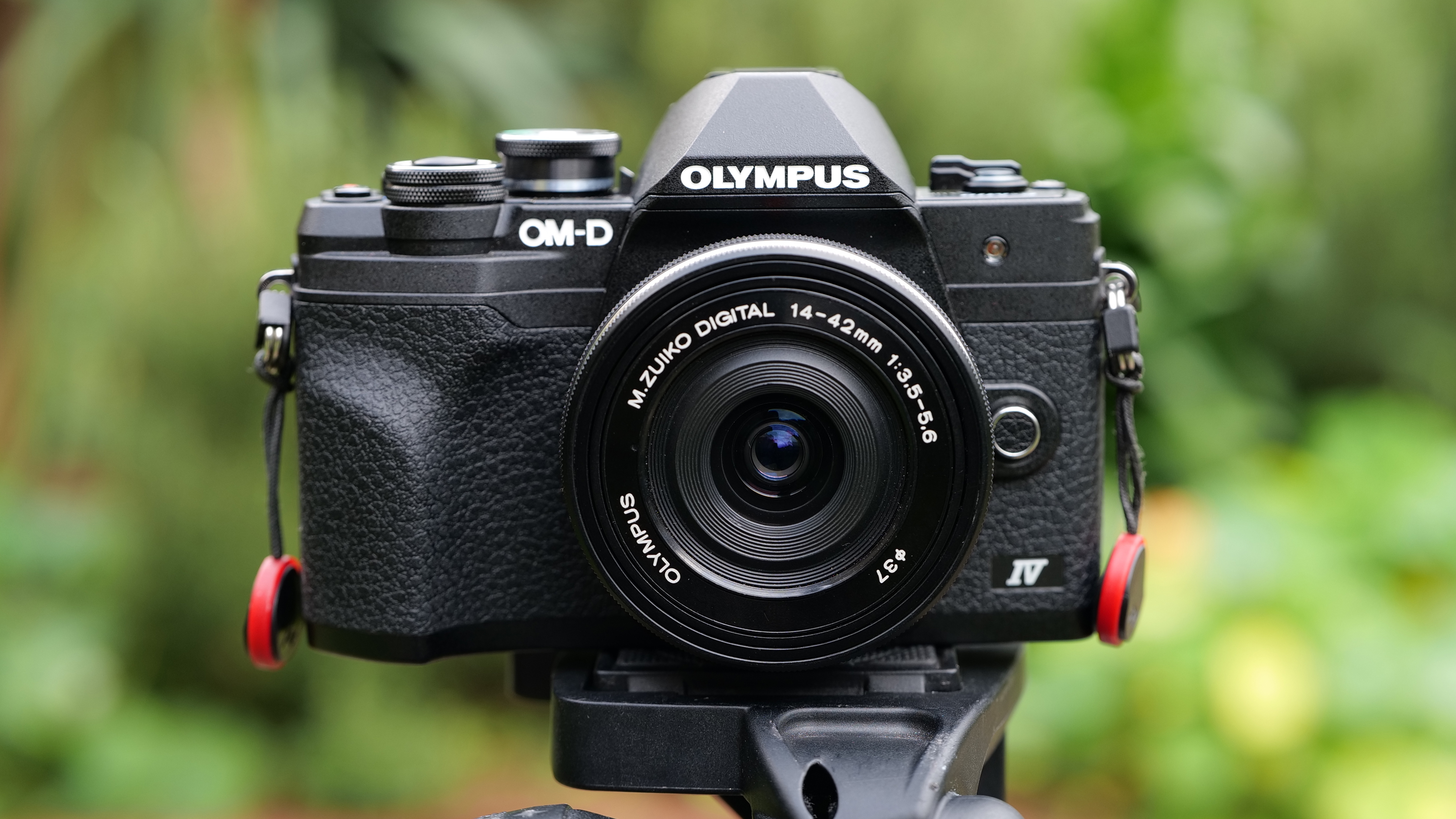
If you’re an eager beginner who's in the market for a compact mirrorless camera, the Olympus OM-D E-M10 Mark IV should be at the top of your list. An affordable Micro Four Thirds model, the Mark IV pairs a capable 20.3MP sensor with impressive in-body image stabilization to deliver consistently attractive images using the kit lens.
With footage capped at 4K/30p and no microphone or headphone input, video isn’t a major focus. Instead, this is a small, powerful camera for stills: dynamic range is better than anything a smartphone can capture, while that IBIS system keeps images sharp even when shooting handheld after dark.
AF tracking across the Mark IV’s 121 points can be a little patchy, but improved face detection and subject tracking from the Mark III mean it’s largely reliable. Stick to centre point focus and you’ll find it fast, even in low light.
An ergonomic grip, approachable button layout and handy flip-down touchscreen make the Mark IV an accessible upgrade for smartphone photographers. And with a wide catalogue of lenses available, it shapes up one of the best cheap cameras around if you want a modern mirrorless experience.
- Read our in-depth Olympus OM-D E-M10 Mark IV review

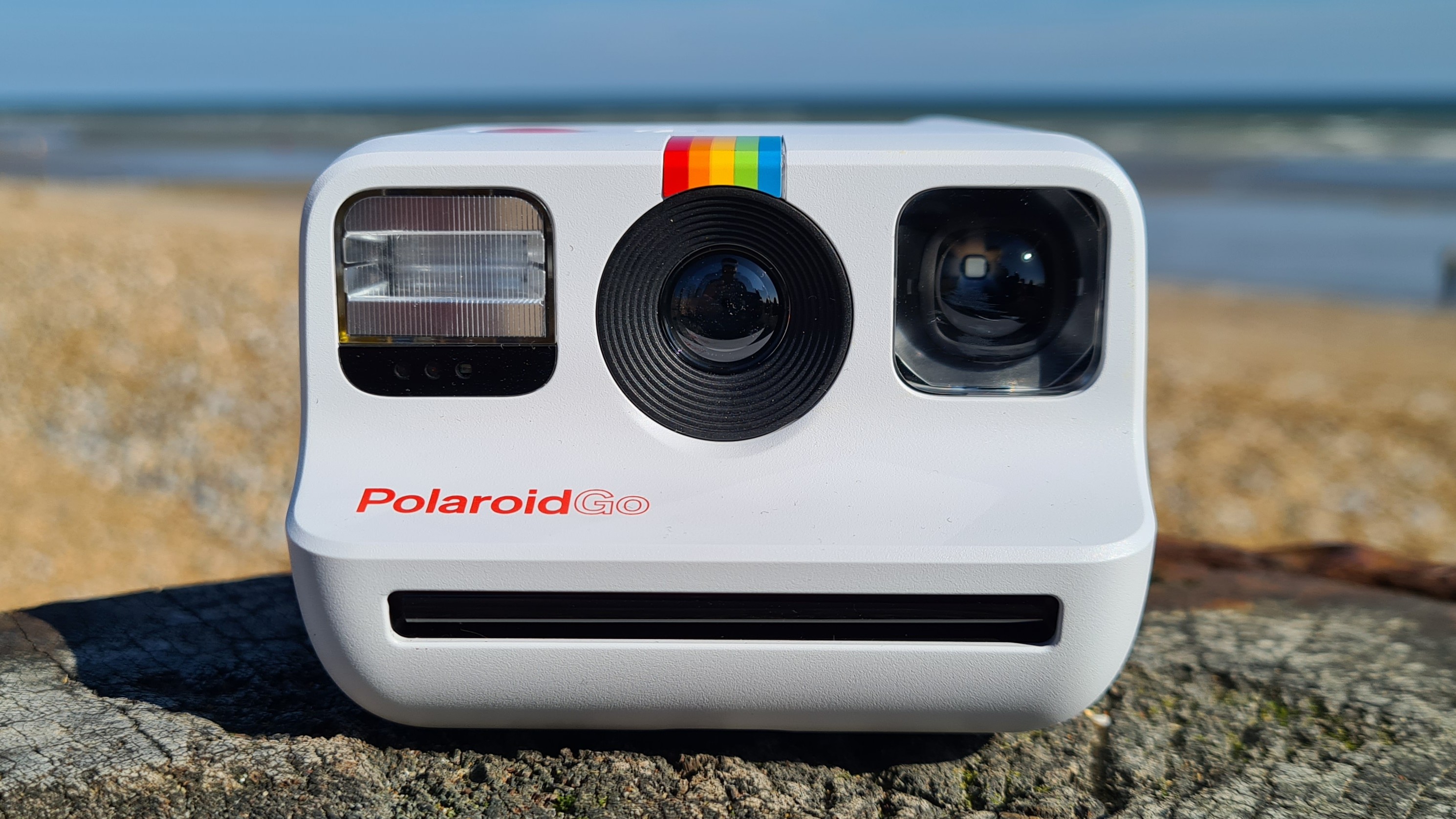
Budget cameras don’t come much cuter than the Polaroid Go. The pint-sized point-and-shoot is supremely easy to use: its compact retro shell features just a few straightforward controls, complimented by a handy digital shot counter. Fixed focus and no macro mode mean creativity is a little limited, but the Polaroid Go does feature flash override, self-timer and double exposure options to keep analogue photographers entertained.
Though the credit-card sized prints produced are a little on the small side, their pastel tones and impressive detail give them an eye-catching lo-fi quality. There are a few less expensive alternatives – and film refills could be cheaper – but you won’t find a more accessible or portable way to enjoy the fun of instant photography.
- Read our in-depth Polaroid Go review

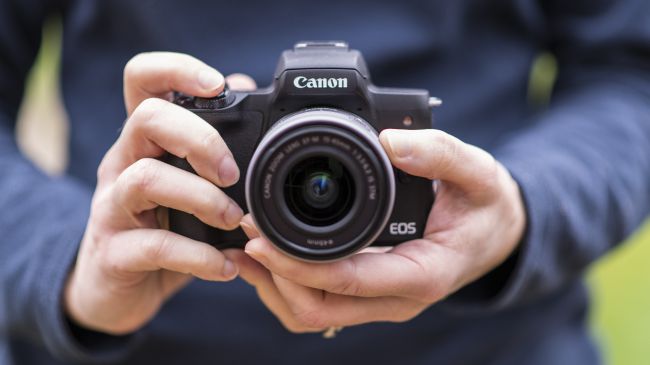
Not everyone needs a cutting-edge camera, which is why the original M50 remains a popular mid-range mirrorless model. A fun, approachable option that offers great image quality, the M50 continues to represent good value for money. That’s only more true following the launch of the M50 Mark II, an update that’s only a modest evolution over the first-gen model. Powered by Canon’s Digic 8 processor and equipped with a Dual Pixel AF system, the M50’s 24.1MP APS-C sensor allows the camera to be relatively compact while still capturing fantastic stills.
Noise is nicely controlled, with excellent detail and impressive dynamic range. The M50’s affordability is not without compromise, mind: battery life could be better – as could the plasticky finish – while the heavy 1.6x crop on 4K footage feels dated. Still, with a large and bright EVF, backed up by a responsive touchscreen interface, the M50 remains one of the best budget cameras with plenty going for it.
- Read our in-depth Canon EOS M50 review

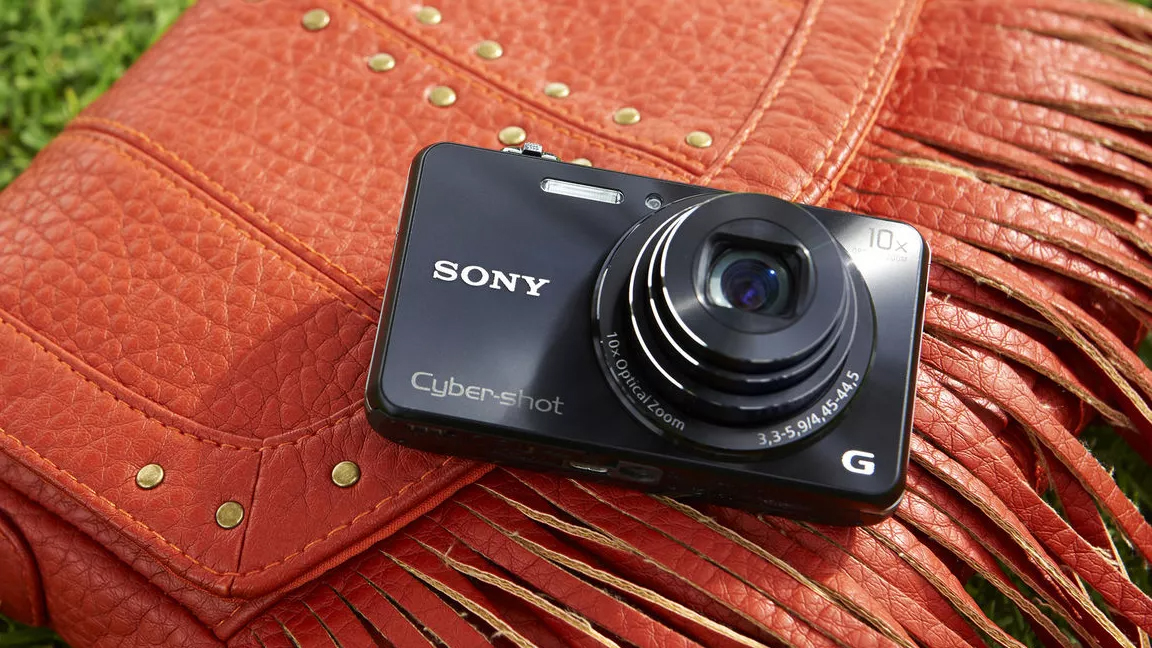
It might be getting a little grey-haired, but the Sony Cyber-shot WX220 remains a great value compact camera. A fine all-rounder, it offers a great blend of performance, zoom range and decent image quality. And it’s now a certified bargain. Aimed at smartphone upgraders, the WX220 isn’t one for control freaks. The menu system is convoluted and there are relatively few buttons on its compact body. There’s no thumb rest or front grip, either. Instead, you get a lightweight, tiny shell that will fit in any pocket.
Despite its diminutive proportions, the WX220 still packs a 10x optical zoom – nowhere near the longest, but impressive in such a small model, and longer than most smartphones. Paired with the 18.2MP CMOS sensor and optical image stabilization, it delivers bright images with great colors and good detail. Look closely and you’ll notice a little image smoothing, especially at long zoom lengths, but nothing that’s noticeable at normal sharing sizes. A solid performer that ticks plenty of boxes without breaking the bank, the WX220 is a budget camera that's well worth a look at current prices.
- Read our in-depth Sony Cyber-shot WX220 review

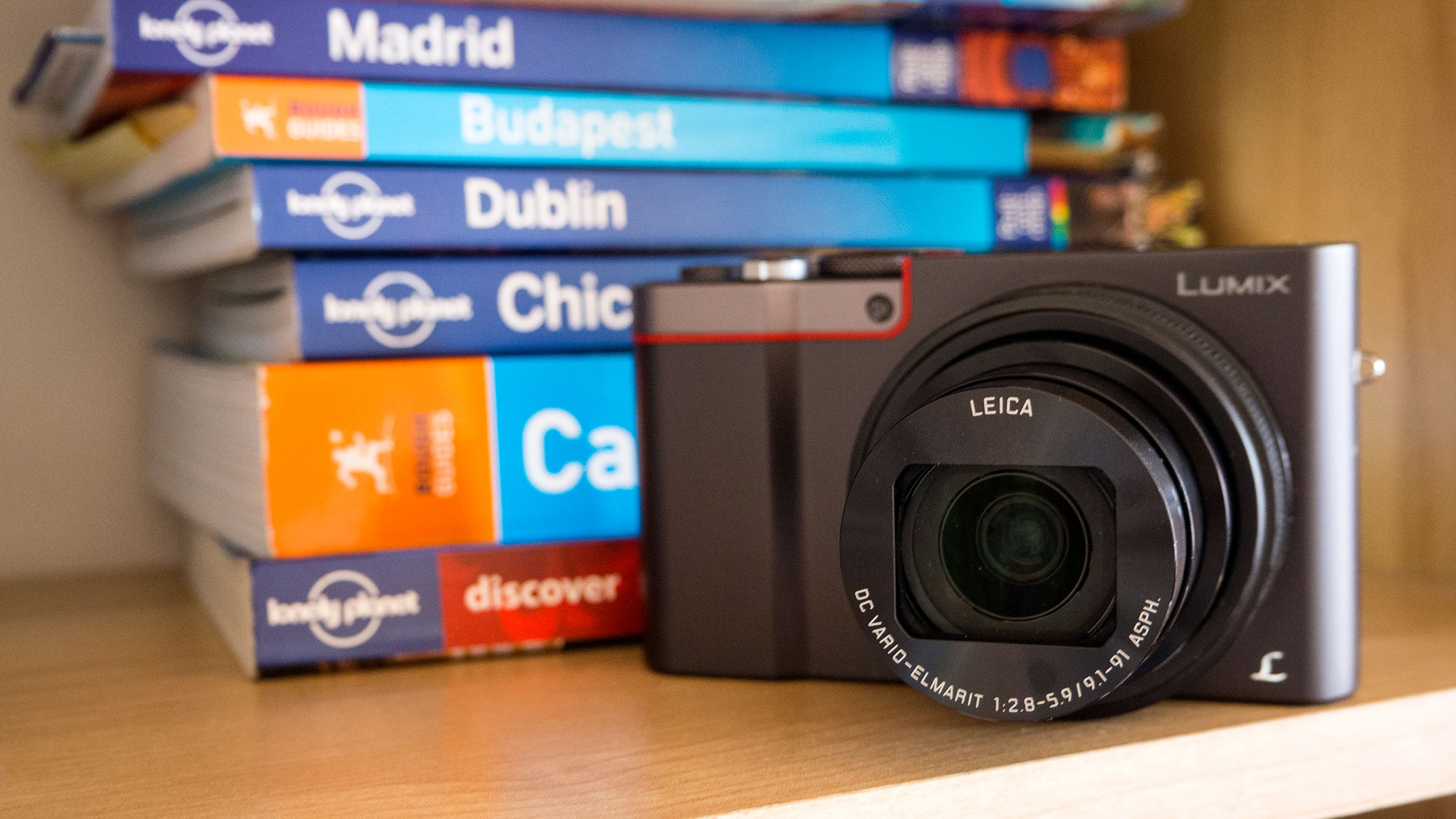
Back in 2017, we called the Panasonic TZ100 “the perfect compact camera.” And, while several models have since arrived with superior specs, the TZ100 remains a fantastic option for those after an affordable compact travel camera.
Its metal shell is solid yet sufficiently small to slip into a pocket. The main controls are clustered on the back for easy one-handed control, while function buttons offer the welcome option of customization – and the touchscreen is responsive, too.
On the go, the TZ100’s 1-inch sensor (which is larger than today's smartphones) delivers vibrant, punchy images with a fair level of detail for an older compact, even in low light. Dynamic range is also decent and noise isn’t generally an issue. The 10x optical zoom will be versatile enough for most, while the option of shooting 4K footage makes simple vlogs an option as well.
Sure, its not quite as powerful as today’s premium compacts, but the TZ100 is plenty good enough for taking travel snaps to share online and will still surpass most smartphones, too.
- Read our in-depth Panasonic Lumix ZS100 / TZ100 review

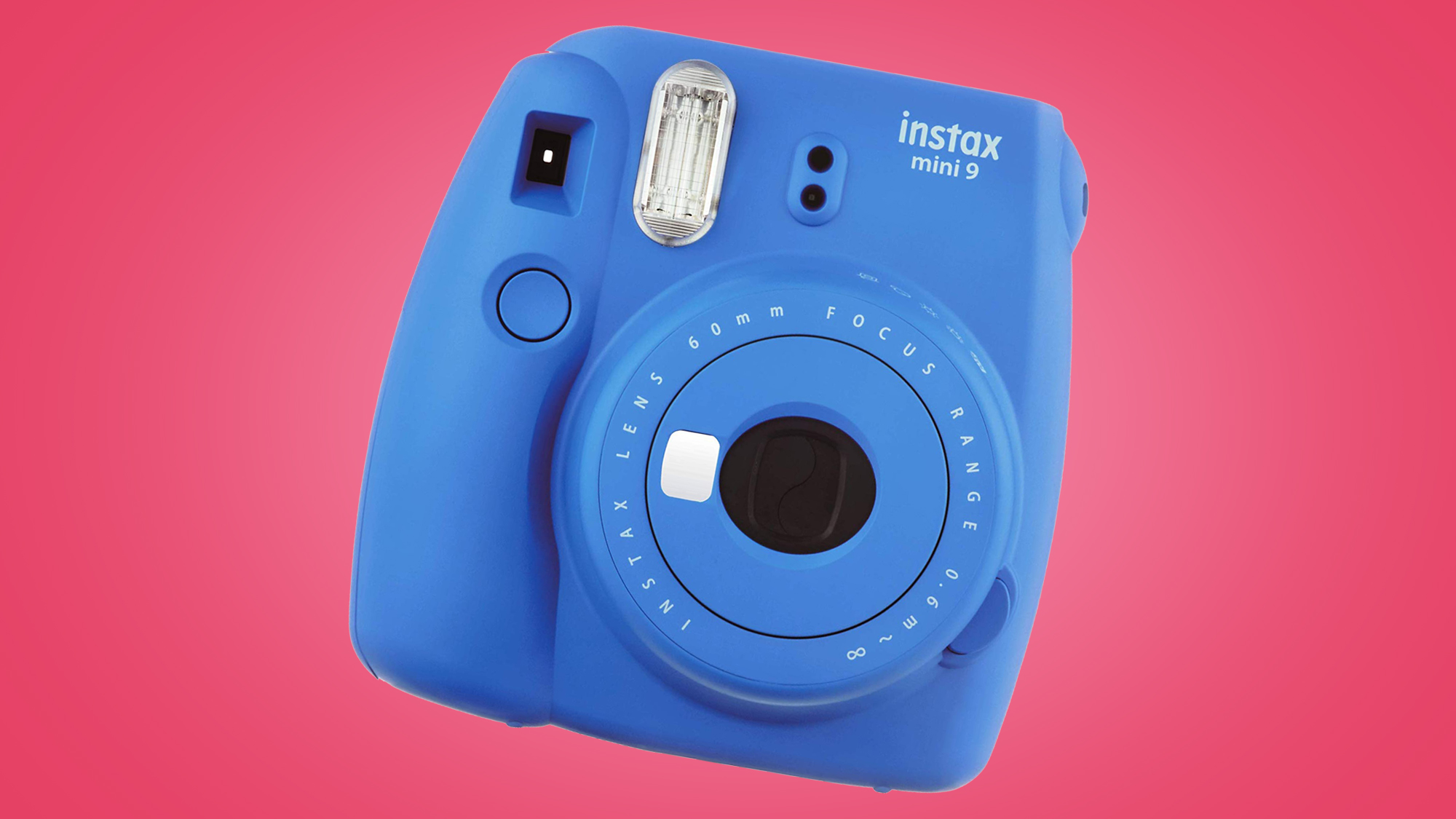
If it’s easy instant snaps you’re after, Fujifilm’s Instax Mini 9 remains a firm favorite, despite the arrival of the very similar Instax Mini 11. Forgoing almost all the controls you’d expect on a modern compact camera, the Mini 9 instead makes fun its focus. Look through the straightforward viewfinder, click the shutter button and in a jiffy you’ll find a credit card-sized print coming from the top of its retro shell.
Charming for its simplicity, the plastic shell of the Instax Mini 9 ships in a spectrum of bold shades, while a little mirror on the front makes framing selfies a cinch. A simple five-level brightness adjustment dial is the extent of its inputs, making the affordable Mini 9 perfect for parties and play-dates. Print quality is naturally limited, but the idea here is to capture retro-style memories rather than crystal clear images. The color film is a little pricey, so you’ll want to make your shots count.
- Read our Should you buy a Fujifilm Instax Mini? feature

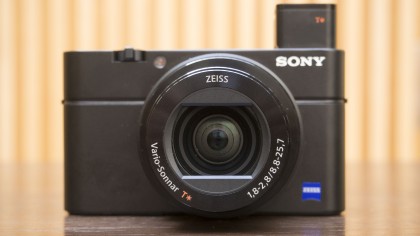
This series has now reached its seventh generation, but it's the RX100 Mark III that currently offers the best value for those looking to upgrade from their smartphone. It was the first model in the series with a built-in electronic viewfinder – a huge boon for shooting in sunny conditions – and it has a large 1-inch sensor, which produces excellent image quality.
You also get a tilting screen and a speedy 10fps continuous shooting mode for capturing moving subjects. If you need 4K video or slo-mo video, then it's worth stretching to the RX100 Mark IV – but the Mark III has recently dropped to some impressively low prices for such a capable, smartphone-beating compact, making it one of the best budget cameras around.
- Read our in-depth Sony Cyber-shot RX100 III review

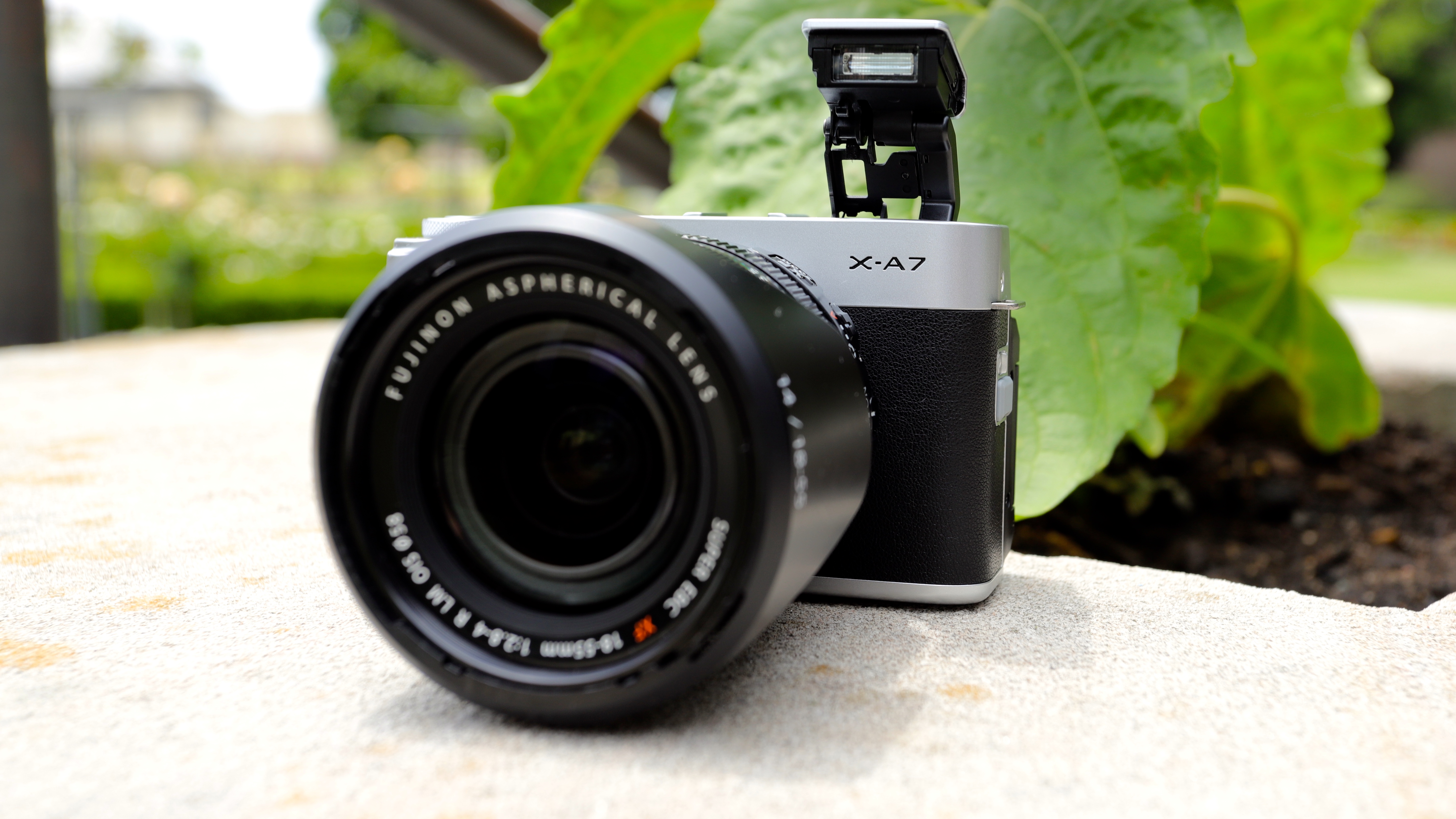
Proof that entry-level doesn't have to be a synonym for underpowered or basic, the Fujifilm X-A7 packs a seriously impressive spec list for an affordable mirrorless camera.
Its hybrid autofocus system isn’t the fastest, but real-world performance is superb, with superlative subject detection and tracking. Images are crisp and sharp with outstanding color reproduction, while noise control is likewise stellar, even as high as ISO 1600.
In the hand, a shallow grip means the X-A7 isn’t especially comfortable to hold for long periods and the position of the joystick makes it tricky to reach with your thumb. Then again, the trade-off is a shell that’s compact, lightweight and stylish, in an old-school sort of way.
Image stabilization would’ve been a welcome addition and some might want a viewfinder, but with 4K video in the mix, the X-A7 stands out as an ideal traveling companion. Set aside those ergonomic niggles and it’s an almost perfect budget camera – and an ideal smartphone upgrade.
- Read our in-depth Fujifilm X-A7 review

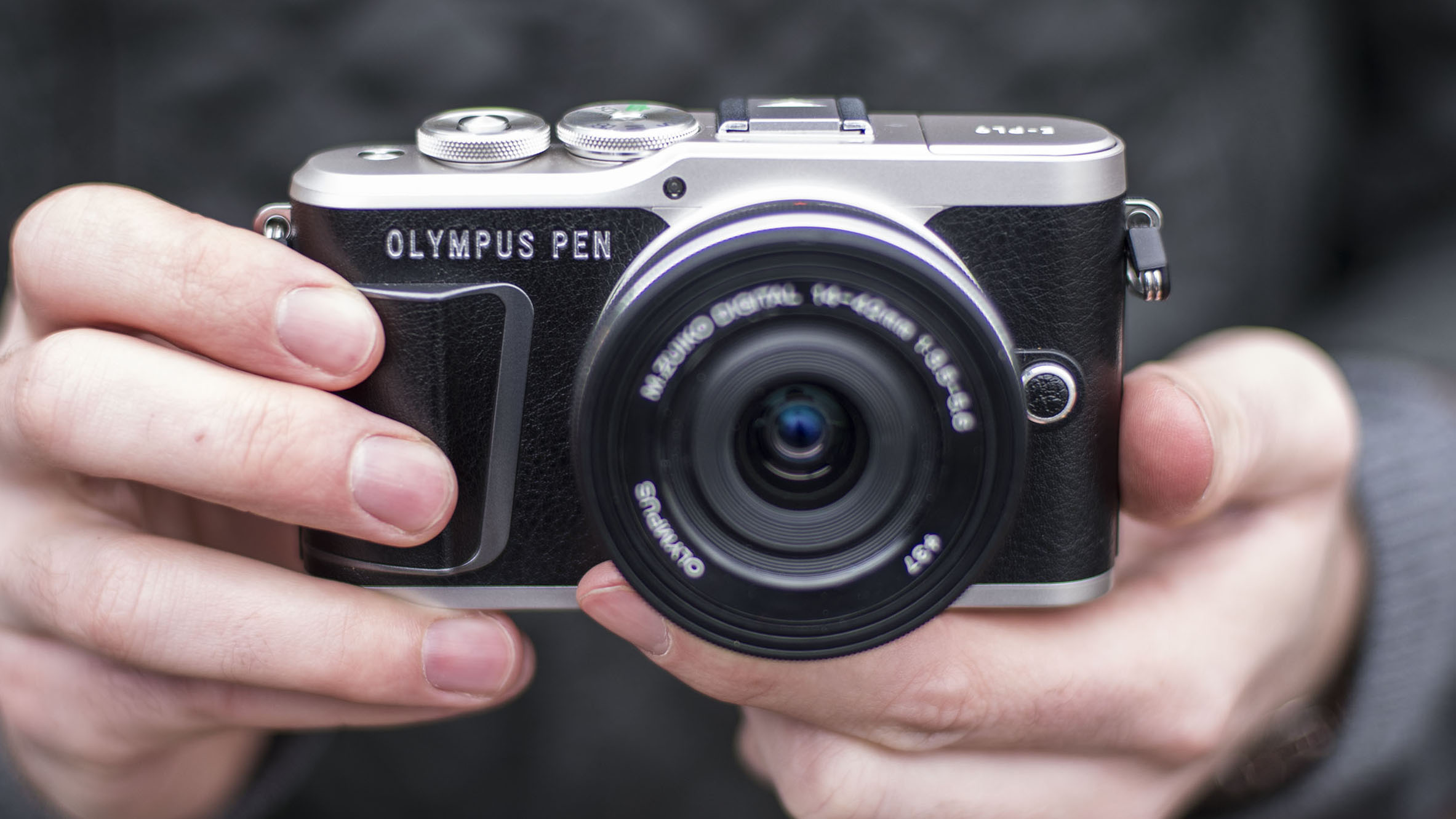
It may have since been succeeded by the Olympus Pen E-PL10, but this mirrorless model is almost identical and is now a serious bargain as a result. If you're looking for a stylish camera that can take smartphone-beating snaps and has a huge range of lenses, the E-PL9 is well worth a look.
One of the benefits of its small, friendly design is that it's not too intimidating or noticeable, making it ideal for taking people shots or portraits. This does mean the E-PL9 lacks a built-in viewfinder, but those coming from a smartphone won't miss that, and it does otherwise combine good handling with a straightforward, beginner-friendly menu system.
The E-PL9's tried-and-tested 16.1MP Live MOS Micro Four Thirds sensor captures nicely rendered shots in most situations. And despite its compact size, its 3-axis image stabilization system is there to give you a helping hand in low light situations. At current prices, there aren't many interchangeable lens cameras that offer a better range of features than the E-PL9.
- Read our in-depth Olympus PEN E-PL9 review

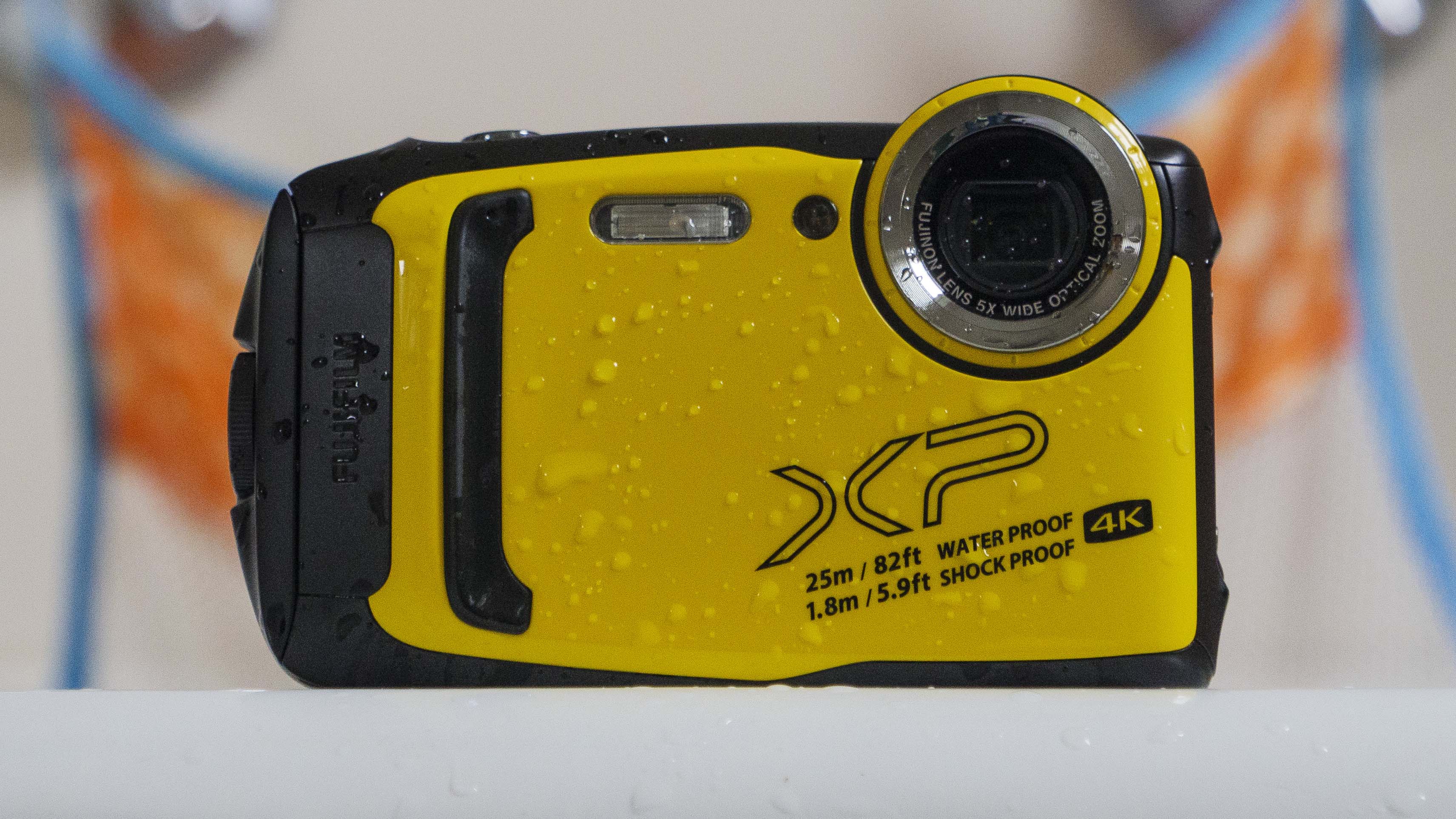
Well-priced yet built tough, the Fujifilm XP140 is one investment that should pay dividends for those with clumsy hands. Dustproof, shockproof to 1.8m and freeze-proof to -10ºC, it’s also waterproof down to 25m – which means it should survive just about anything you can throw at it.
More than a beefed-up bargain camera, the XP140 can also capture great images. It keeps the same stabilized 16.4MP sensor as the XP140 but adds improved scene- and eye-detection smarts, which help to deliver sharp portrait pictures. 4K footage is limited at 15fps, but 1080/60p video is smooth, while the option to shoot 720p slow-mo at 100fps is neat. The maximum ISO has also doubled to 12,800 which, with a back-illuminated sensor, makes for better low-light images, including underwater shots.
5x optical zoom offers decent versatility for a rugged compact, while the 3-inch touchscreen makes controlling the camera straightforward. With Wi-Fi and Bluetooth connectivity also in the mix, the Fujifilm XP140 represents great value and is one of the best cheap cameras around for those who need something nigh-on indestructible.

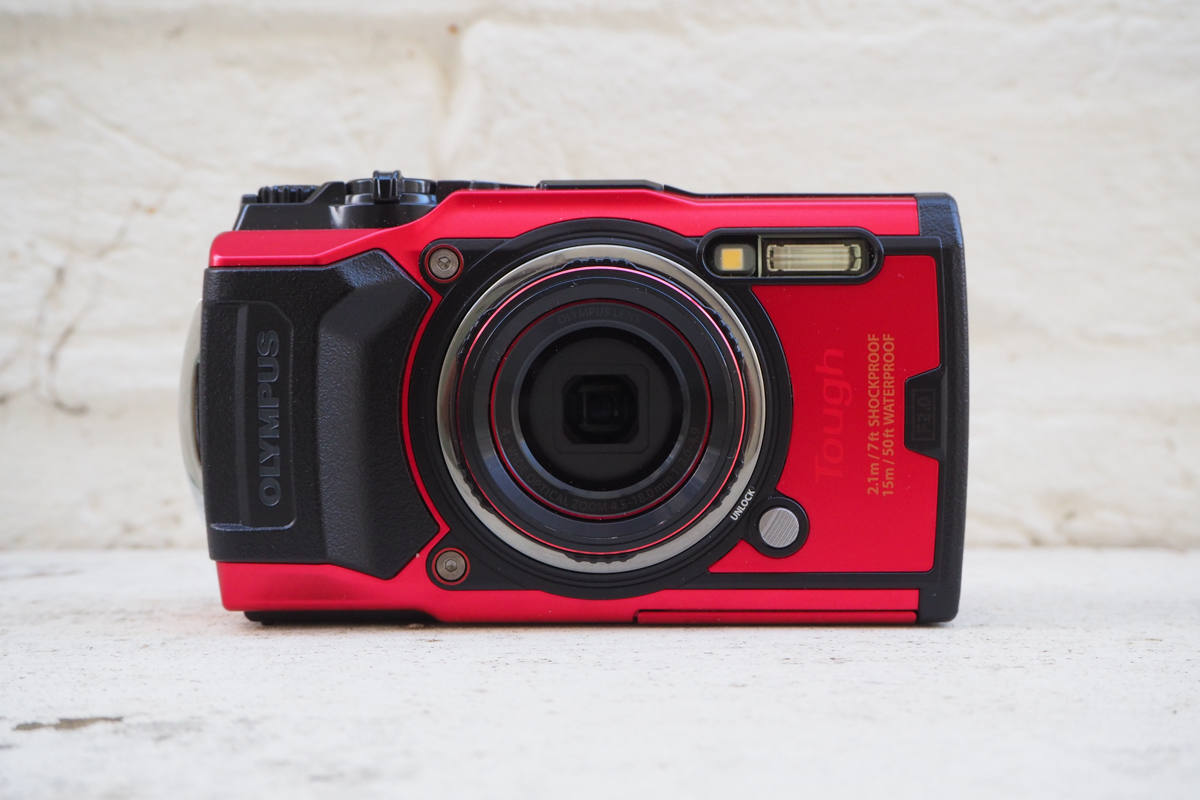
Breaking your camera is one way to make photography an expensive hobby. Investing in a rugged model should cut replacement costs – and the Olympus Tough TG-6 is one of the best tough cameras you can buy. Freeze-proof, shockproof and waterproof: its reassuringly industrial shell is robust enough to survive all manner of extreme scenarios. It’s also an intuitive camera to use. Large buttons make operation accessible, while an improved 3-inch LCD display ensures good visibility in bright conditions.
Focusing is snappy and an equivalent zoom range of 25-100mm adds welcome versatility, even if a little detail is lost at the telephoto end. Image quality is decent enough for a 1/2.3-inch sensor, with rich colors – although the TG-6 is prone to overexposure. The older TG-5 is similarly equipped and less expensive, but the TG-6 represents excellent value for adventurous photographers thanks to its significantly sharper screen.
- Read our in-depth Olympus Tough TG-6 review

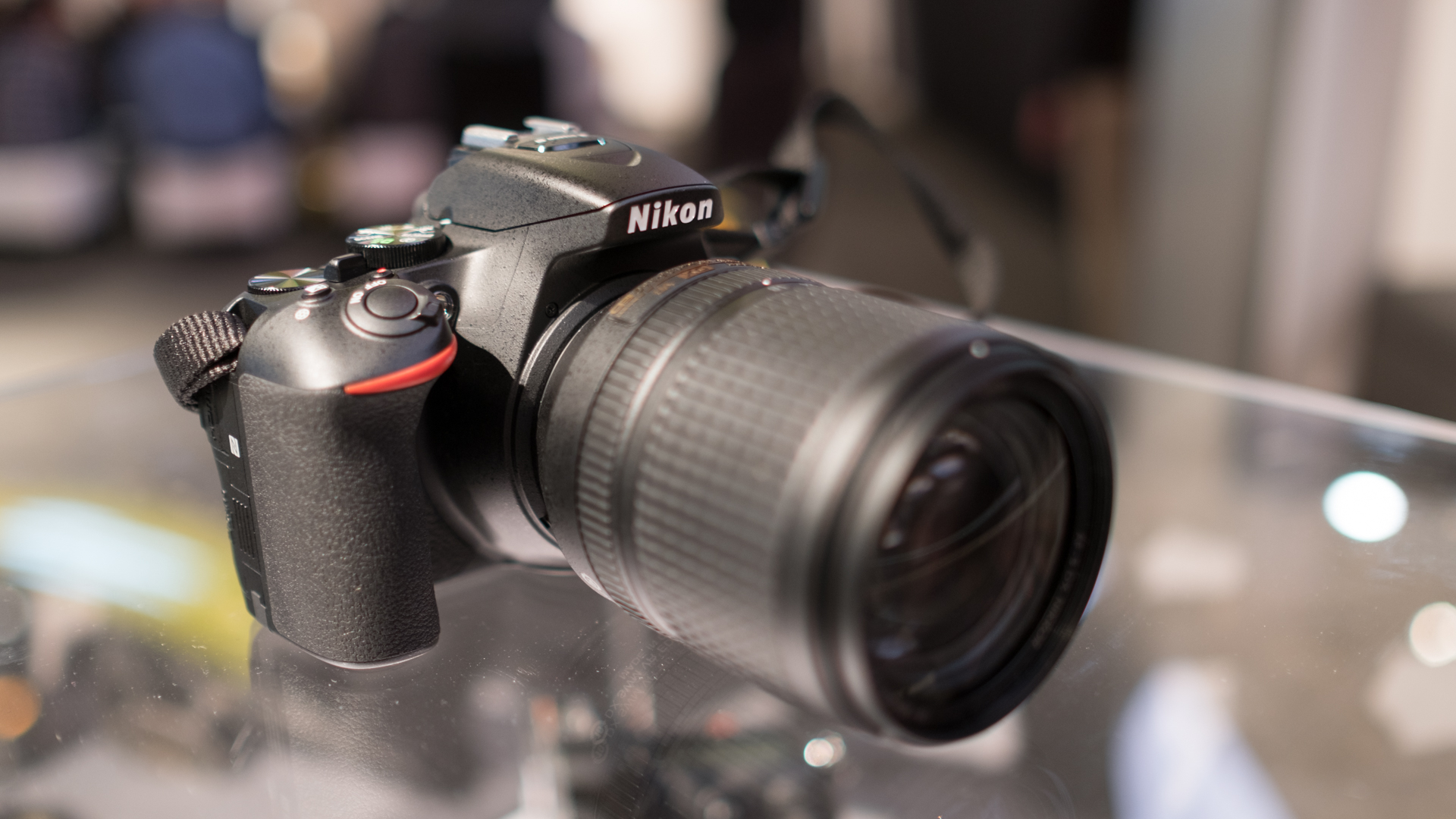
The D5600 is a step up from the D3000-series models, with a stronger set of specs to rival the likes of the Canon EOS Rebel T7i / EOS 800D. Key advantages over the D3500 (listed in position one here) include a larger LCD screen, which not only flips out and swivels all the way around to face the front, but also responds to touch, together with a more advanced autofocus system, Wi-Fi and a healthy range of additional control on the inside. Sure, you pay a little extra for the privilege, but if you need a little more growing space it makes sense to go for the D5600 so that it stays with you for years to come.
- Read our in-depth Nikon D5600 review

- Best compact camera
- Best camera for beginners
- Best cameras for kids
- Best waterproof camera
- Best travel camera
- Best bridge camera
- Best beginner mirrorless camera
- Best mirrorless camera
- Best beginner DSLR camera
- Best DSLR
- Best action camera
- Best instant camera
- Best digital photo frames
- Best beginner drones
Contributer : Techradar - All the latest technology news https://ift.tt/3nKtySc

 Reviewed by mimisabreena
on
Friday, August 27, 2021
Rating:
Reviewed by mimisabreena
on
Friday, August 27, 2021
Rating:















No comments:
Post a Comment